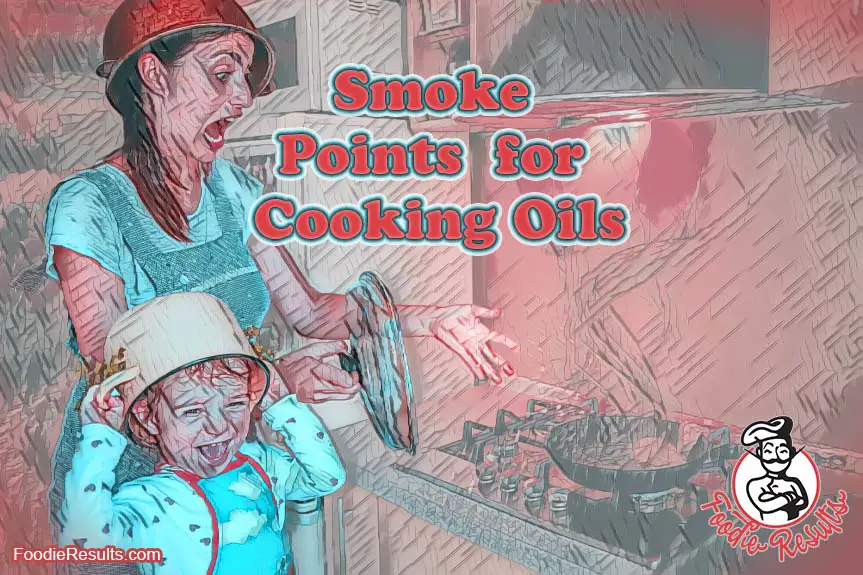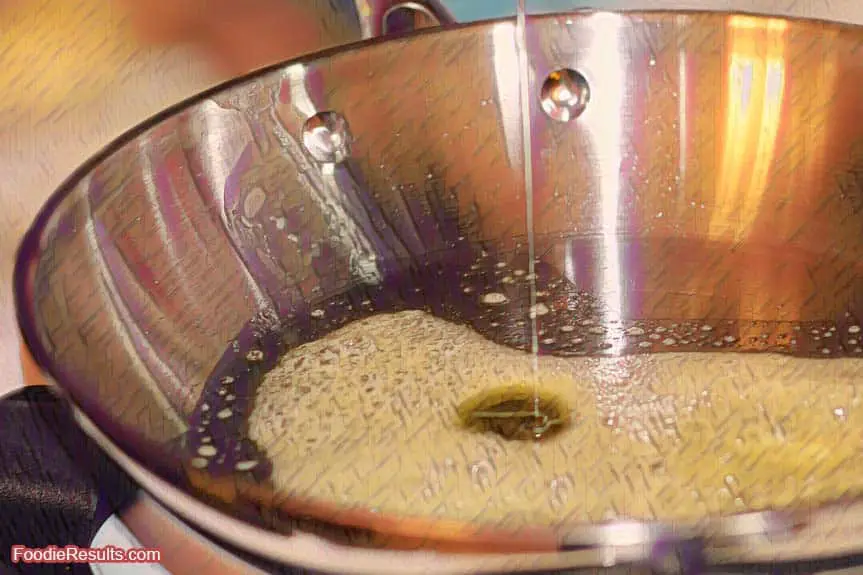
When cooking, it helps to know the smoke points for the different oils you have in your kitchen or might have available. So I’m starting a table below with varying points of smoke. The most significant way to use this is when looking at a recipe and cooking temperatures; you can determine the best substitute oil to use without smoking up your kitchen. Check out De Lana’s oil article if you are looking for optimal cooking temperatures for oils and flavor information.
I will add a video later that tests these smoke points.
Typically, the purer the oil, the higher the smoke point. As you use the oil, the impurities from the food contaminate the oil lowering the smoke point. Many chemical processes cause this, and I will share the information with you as I learn more about it.
Smoke Points Chart
| Oil | Smoke Points | Note | Ideal For |
| Avocado Oil | 520°F 270°C | Refined is highest | searing, frying, baking, grilling, roast |
| Almond Oil | 430°F 221°C | grill, roast, bake, | |
| Sesame Oil | 400°F 204°C | sauté, pan-fry | |
| Butter | 350°F 177°C | sautéing, baking, grilling, searing | |
| Ghee | 482°F 250°C | Clarified butter | sautéing, searing |
| Canola Oil | 400°F 204°C | sautéing, pan fry | |
| Coconut Oil | 350°F 177°C | Sautéing, searing, grilling, baking, | |
| High-Quality EVOO* | 430°F 221°C | During testing, we found higher quality oil can get much hotter. | |
| Extra Virgin OO** | 410°F 210°C | Pure is highest | sautéing, frying med heat |
| Flax Oil | 225°F 107°C | flavor on finish | |
| Grapeseed Oil | 400°F 204°C | frying, baking | |
| Light OO** | 468°F 242°C | Purer than EV | fry, sautéing, bake, grill, searing, fry |
| Peanut oil | 450°F 232 C | deep fry, pan fry, sautéing, roast, grill, baking | |
| Safflower oil | 450°F 232°C | deep fry, pan fry, sautéing, roast, grill, baking | |
| Sunflower oil | 440°F 227°C | deep fry, pan fry, sautéing, roast, grill, baking | |
| Walnut Oil | 320°F 120°C | flavor on finish | |
| Veg. Short. | 400°F 204°C | sautéing, pan fry | |
| Lard | 370°F 178°C | sautéing, baking, grilling, searing | |
| Veg. Oil | 425°F 218°C | deep fry, pan fry, sautéing, roast, grill, baking | |
| Soybean Oil | 450°F 232°C | deep-frying, pan-frying, sautéing, roasting, grilling, baking | |
| Macadamia Nut Oil | 210°F 99°C | roasting, baking, deep-frying; salad dressings, butter substitute |
*EVOO = Extra Virgin Olive Oil
**OO = Olive Oil
Something interesting to note about oils and frying temperatures: the purer the oil, the higher the smoke point will be. As you use the oil, the impurities from the food contaminate the oil lowering the smoke point. I know many chemical processes are happening to cause this, and as I learn more about it, I will share that information with you.
You might have some questions about longevity and reuse now, so let’s get into that.
Can You Reuse Cooking Oil
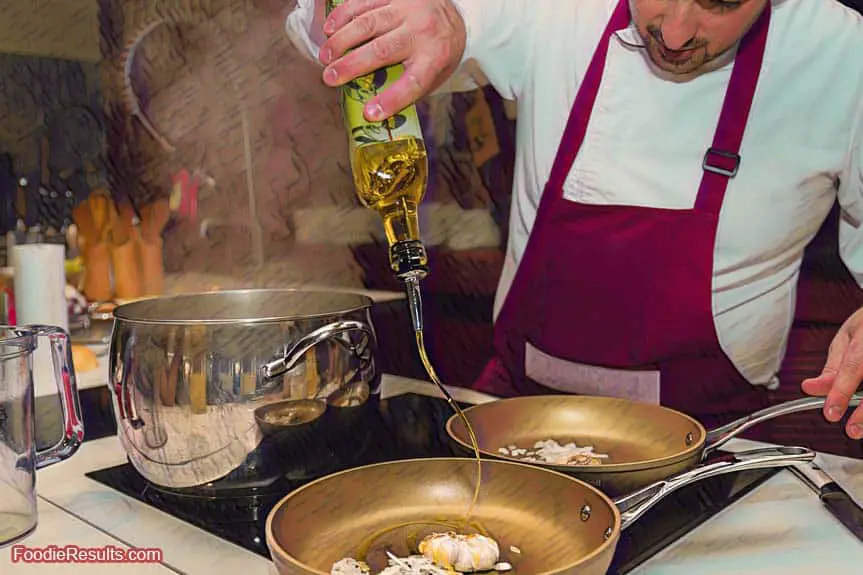
While it is best to use new cooking oil when possible, it is not always necessary. According to this paper by E. Choe and D.B. Min, several chemical and physical reactions happen during the deep-frying process. The most impactful to flavor are hydrolysis, polymerization, and oxidation. The free fatty acid value is used to monitor the quality of frying oil; the details of this process are a little outside the scope of this post, but it is suggested that the maximum free fatty acid content for frying oil is 0.05% to 0.08%.
by E. Choe and D.B. Min, several chemical and physical reactions happen during the deep-frying process. The most impactful to flavor are hydrolysis, polymerization, and oxidation. The free fatty acid value is used to monitor the quality of frying oil; the details of this process are a little outside the scope of this post, but it is suggested that the maximum free fatty acid content for frying oil is 0.05% to 0.08%.
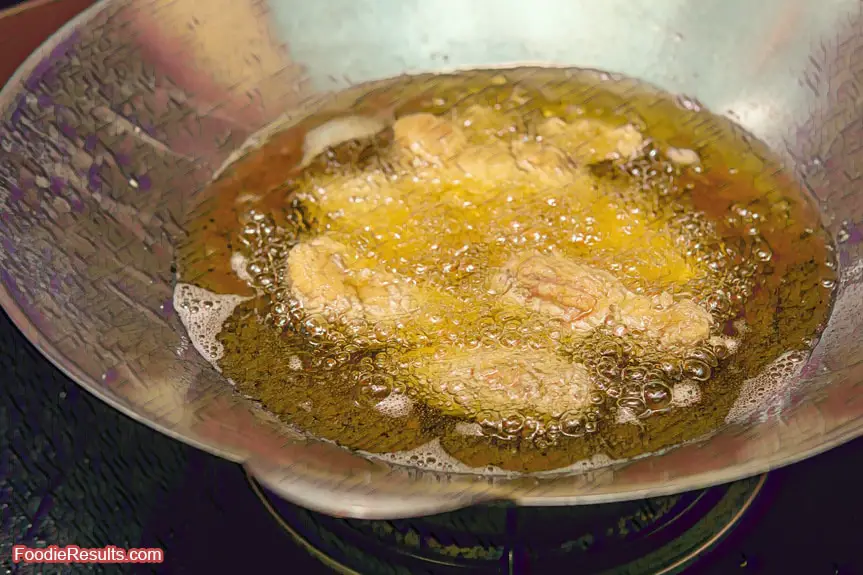
It might be easier to evaluate oil by looking for an “off” flavor. Deep-fried foods should taste good; any off-flavors are the first indication that it is time to replace your oil. You can extend the life of the oil by refreshing it instead of waiting for the off-flavors to show.
It will be beneficial to ensure you are not introducing extra water into your deep fat frying oil to help prevent hydrolysis.
Polymerization of oils may have the most direct impact on the flavor of the finished product. According to the paper mentioned above, the compounds that give deep-fat fried foods good flavors have been found in the parts per million or ppm, and it is likely the first thing to happen that will reduce the flavor quality of the fried foods.
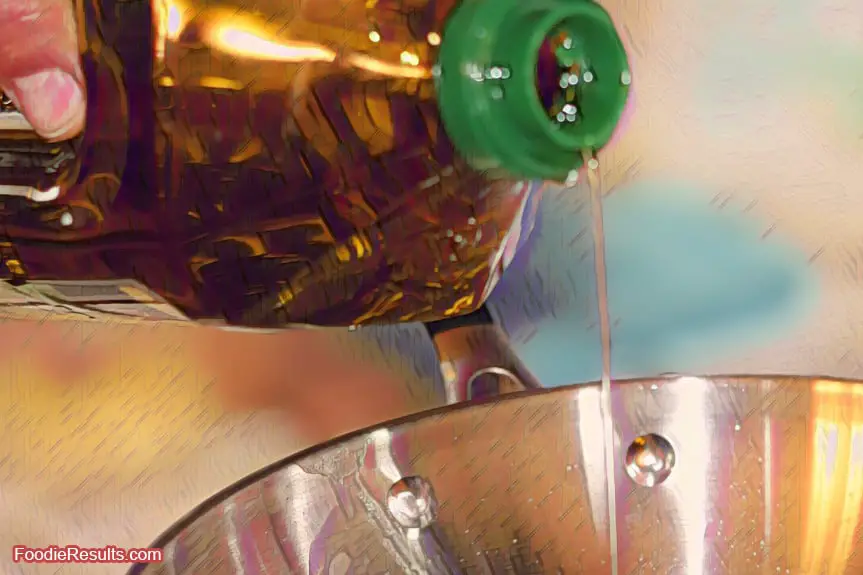
Reducing oxidation is also crucial for keeping your frying oil longer. Do not smoke your oil; follow the guidelines above to avoid excessively heating your oil. Reduce the exposure to light. Reduce exposure to tin, copper, and iron by using stainless steel should help your oil last longer. Metals other than stainless are known as polyvalent metals and assist in removing the hydrogen protons from your cooking oil to keep things simple; this helps in oxidization even at low temperatures, which we don’t want.
How Can I Know If My Oil Is Still Good?
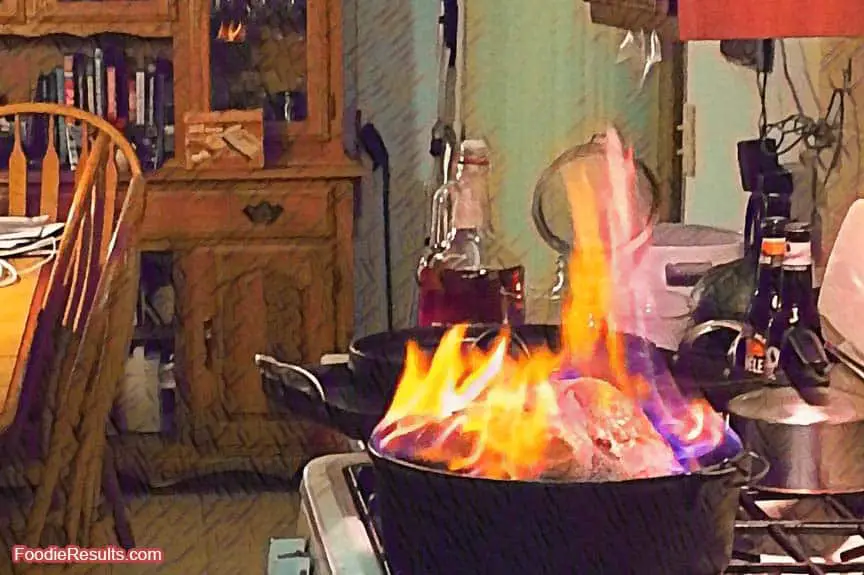
Food cooked in quality oil still in its prime will have a fruity and nutty odor and a buttery flavor. However, you might want to know when the oil is starting to get “bad.
Not cooking fish and having a fishy flavor and smell to the oil is a sign that it is well past its prime.
Recipes – Foodie Results
Articles – Foodie Results
I’ve smoked up my kitchen plenty of times, and wish I had this information much earlier in my cooking life.

